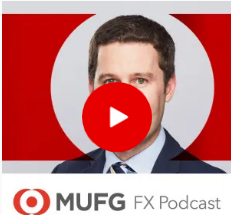NFP in focus as Fed in data dependent mode when setting policy
USD: All eyes on the NFP report to assess if Fed hiking cycle is close to an end
The major foreign exchange rates have remained relatively stable ahead of the release of the latest US employment report later today. Overnight the dollar has given back some the gains recorded earlier in the week driven in part by the tentative improvement in global investor risk sentiment. Global equity markets have stabilized overnight following heavy selling over the two previous days following the announcement from Fitch that is has downgraded the US sovereign credit rating. MSCI’s ACWI global equity index has fallen by around -2.5% from the high at the start of the month. It has been the biggest setback since the 2H of June. Risk assets staged a strong rally throughout most of June and July as market participants have become more optimistic over a softer landing for the global economy. We currently view this month’s sell-off as a temporary correction rather than the beginning of a more sustained reversal lower. It has though driven a shake out of popular FX positions. Latam currencies that have outperformed this year have suffered the biggest losses in recent days. The Colombian peso has declined by -4.8% vs. USD, the Brazilian real by -2.5%, and the Mexican peso by -2.4%. In contrast, the spill-over impact from equity market weakness has been more modest for G10 FX. The two best performing currencies have been the traditional safe haven currencies of the yen (+0.6% vs. USD) and Swiss franc (+0.1% vs. USD) while the NZD has suffered the biggest losses (-1.0% vs. USD).
The market’s focus will shift today to the release of the latest non-farm payrolls report for July. It is a similar set-up to last month when the release of another stronger than expect ADP survey this week has raised market expectations for a strong payrolls report today. It was the second consecutive month that the ADP survey has provided a very strong estimate for private employment growth (324k for July & 497k for June). However, the ADP survey did not prove to be that accurate for June when the non-farm payrolls report revealed slower employment growth of 209k. The underlying trend so far this year has been that employment growth has slowed modestly. The 6-month average for monthly employment growth fell to 278k in June down from 354k in December. From a historical perspective employment growth remains strong although it is slowing. Reassuringly for the Fed there has been more evidence that wage growth has slowed as well despite tight labour market conditions helping to ease concerns over upside risks to the inflation outlook. It was revealed yesterday that unit labour costs growth was weaker than expected during the 1H of this year. Unit labour costs growth slowed to 1.6% in Q2 after a downwardly revised increase of 3.3% in Q1. It was the third consecutive softer quarterly reading. In light of these developments we remain confident that the Fed can pause their hiking cycle in September. It would take a significant upside surprise from today NFP report to challenge those expectations and reinforce the US dollar’s recent upward momentum.
SLOWING WAGE GROWTH HAS PROVIDED REASSURANCE TO FED

Source: Bloomberg, Macrobond & MUFG GMR
GBP: Smaller hike triggers short-lived sell-off
The pound sold off yesterday initially following the BoE’s latest policy update but the sell-off proved short-lived. After hitting an intra-day low yesterday of 1.2621, cable has since risen by around 1 big figure back above the 1.2700-level. As we highlighted in yesterday’s FX Focus report (click here), the pound sell-off was initially triggered by the BoE’s decision to deliver a smaller 25bps hike rather than back-to-back 50bps hikes. However, the BoE’s policy guidance was little changed as it continued to signal that it remains prepared to raise rates further in response to persistent inflation risks. The UK rate market and the pound had already adjusted to scale back expectations for BoE rate hikes ahead of yesterday’s MPC meeting and that helped to dampen the market reaction. After peaking at around 6.50% in early July, the UK rate market had already scaled back expectations for the terminal BoE policy rate to around 5.75% ahead of the yesterday MPC meeting. Looking at market pricing today, the UK rate market is still expecting another two 25bps hikes from the BoE by early next year so the impact of yesterday policy update has been limited. In contrast, we still expect the BoE to deliver only one final 25bps hike in September. It will require more evidence of slowing inflation and weaker growth in the UK to convince market participants to further scale back their rate hike expectations, and to rule out a hike in late 2023/early 2024. In the near-term, pound performance is more likely to be driven by global investor risk sentiment. The sell-off in global equities has weighed on the pound in recent days.
KEY RELEASES AND EVENTS
|
Country |
BST |
Indicator/Event |
Period |
Consensus |
Previous |
Mkt Moving |
|
UK |
12:15 |
BoE MPC Member Pill Speaks |
-- |
-- |
-- |
!! |
|
US |
13:30 |
Average Hourly Earnings (MoM) |
Jul |
0.3% |
0.4% |
!!! |
|
US |
13:30 |
Nonfarm Payrolls |
Jul |
200K |
209K |
!!! |
|
CA |
13:30 |
Employment Change |
Jul |
21.1K |
59.9K |
!! |
Source: Bloomberg



